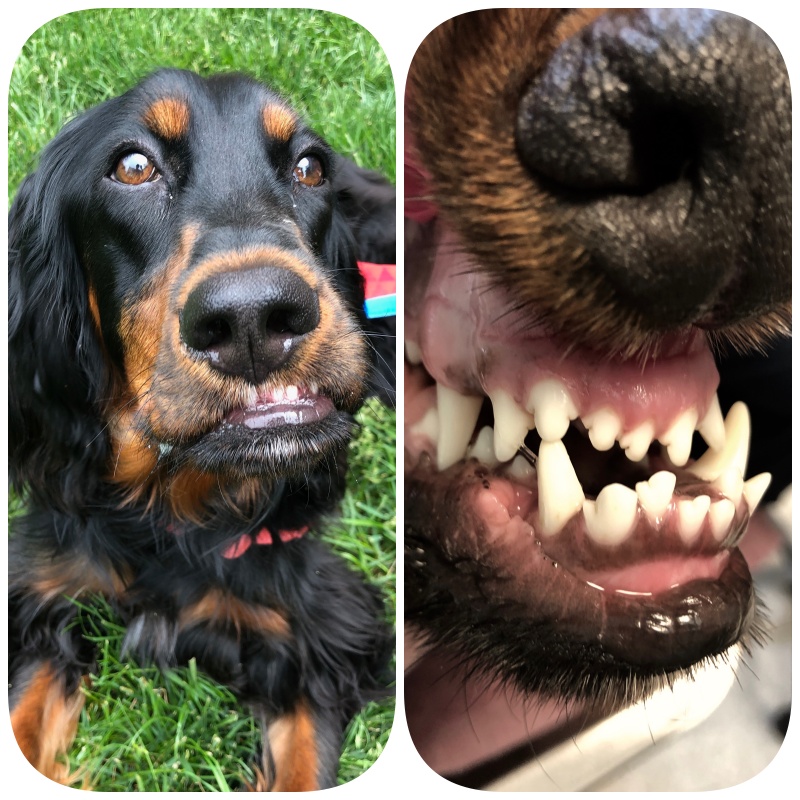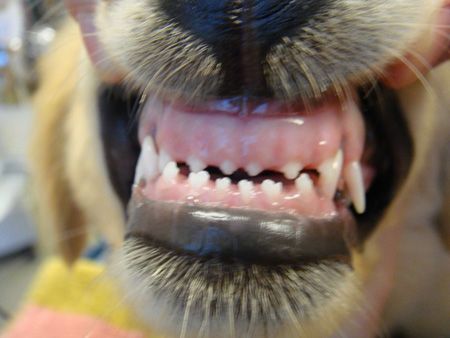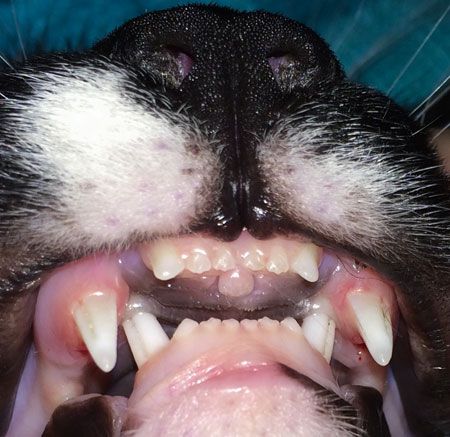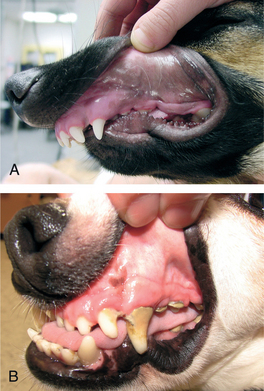class iii malocclusion dog
The mandibles are longer in respect to their normal relationship to the maxilla. Malocclusion involves abnormal relationships of teeth to each other and other oral structures.
Helping Your Puppy With Teeth Misalignment Malocclusions
It can be classified as rostral or caudal.

. The mandible resides mesial rostral to its normal location in relation to the maxilla Photo 6. Origins of class 3 malocclusions Dental class 3 malocclusion. Malocclusion in dogs is commonly diagnosed in puppies when the primary dentition is present.
What is class 3 malocclusion dog. Class II malocclusion. The Class III malocclusion was treated establishing occlusal and facial normal standards.
Class III Malocclusion Crossbite with a Missing Upper Incisor and a Peg Lateral Incisor JDO 57 Fig. Class III malocclusions are commonly seen in brachycephalic dogs boxers pugs boston terriers etc. Frequent biting of your inner cheeks or tongue.
Speech changesincluding the development of a lisp. 10 document the complexity of the malocclusion. There are 6 persistent deciduous teeth.
Cephalometric and panoramic radiographs Fig. However if there are no significant soft tissue implications and the patient does not want to undergo orthognatic surgery other treatment options may be considered. A malocclusion in which a mandibular tooth or teeth have a more buccal or labial position than the antagonist maxillary tooth.
7 as well as anterior segment photographs Fig. Class III malocclusion represents a complex three-dimensional facial skeletal imbalance between maxillary and mandibular growth along with varying degrees of dentoalveolar and soft tissue compensations which can be expressed in many morphological ways44 Class III malocclusion may be associated with maxillary growth deficiency andor maxillary. The American Veterinary Dental College defines Class II malocclusion as mandibular distocclusion when there is an abnormal rostro-caudal relationship between the dental arches in which the mandibular arch occludes caudal to its normal position relative to the maxillary arch Figure 3Terms that have commonly been associated with class II.
Photos courtesy John Lewis. Mandibular mesioclusion Class 3 malocclusion. Class IV malocclusions result from asymmetrical.
Improper alignment of your teeth. The entire jaw is improperly positioned due to a growth problem. Although considered normal in brachycephalic breeds maxillary incisor contact with the lingual floor or canine teeth can cause significant trauma and discomfort.
In rostral crossbite cases similar to anterior crossbite in people one or more of the mandibular incisor teeth are labial to the opposing maxillary incisor teeth when the. Changes in the appearance of your face. These dogs and cats.
The maxilla is too short relative to the mandibles. Note the spring was incorrectly positioned blue oval. Sadly this serious craniofacial abnormality is considered breed standard for a great many breeds of dog and several breeds of cats the brachycephalics despite this anatomy being associated with a great many liabilities that negatively impact health and quality of life.
Class III malocclusions are commonly seen in brachycephalic dogs boxers pugs boston terriers etc. Compensatory Class III malocclusion treatment associated with mandibular canine extractions. The lower teeth are too far forward compared to the upper teeth Skeletal class 3 malocclusion.
B Mild Class 2 malocclusion in a 55-month-old mixed-breed dog. Skeletal Class III malocclusions are ideally treated with orthodontic-surgical approaches. If a dog or cat has a class II or III malocclusion where the one jaw is shorter than the other jaw most often this is due to a hereditary genetic trait.
I saw a 10-week-old puppy recently with a malocclusion that was mild enough to consider ball therapy. Surgical-orthodontic treatment of Class III malocclusion with agenesis of lateral incisor and unerupted canine. A malocclusion in which a mandibular tooth or teeth have a more buccal or labial position than the antagonist maxillary tooth.
Class III Malocclusion. Class III malocclusions are considered underbites in dogs and cats. Malocclusion can present without significant symptoms or can be severely debilitating.
The patients diagnosis was one of a Class III malocclusion of skeletal and dental etiology associated with a straight profile prognathic long and asymmetric mandible narrow maxilla moderate lower arch Curve of Spee retruded lower incisors proclined upper incisors mild-moderate crowding impacted tooth 23 and cross bite at tooth 12. At twelve months 12M into treatment a torquing spring was placed on canines bilaterally to decrease root prominence yellow dotted oval on the left. What is a Class 1 malocclusion.
Anterior crossbite extended from the right lateral incisor to the left 2ndpremolar. Skeletal Class III Malocclusion with Canine Transposition and Facial Asymmetry. A Class 1 malocclusion linguoversion of tooth 704 in a 10-week-old golden doodle.
This is a type III malocclusion in a dog- the lower jaw is longer than the upper jaw by about 12 an inch. Compensatory Class III malocclusion treatment associated with mandibular canine extractions Skeletal Class III malocclusions are ideally treated with orthodontic-surgical approaches. Discomfort when chewing or biting.
In order to detect a malocclusion it is important for veterinary surgeons and veterinary nurses to have an understanding both of normal occlusion and of the classification.

That Bites Dental Malocclusions And Abnormal Bites In Pets Vet In Aurora The Animal Dental Clinic

Severe Class Iii Malocclusion In A Dog Underbite

Overbites And Underbites Malocclusions In Dogs And Cats

Malocclusions Misaligned Teeth Animal Dental Specialist

Identifying Problems Early In A Puppy Or Kitten Mouth

Severe Class Iii Malocclusion In A Dog Underbite

Read This Dentistry Article By Katie Rankin Bs Rvt

Treatment Of Class Ii Malocclusion With Tooth Movement Through The Maxillary Sinus American Journal Of Orthodontics And Dentofacial Orthopedics

Angle S Classification Of Malocclusion Dentodontics

The Abcs Of Veterinary Dentistry M Is For Malposition And Malocclusion

Defining Dental Malocclusions In Dogs Is The First Step Toward Treatment

Class Iii Treatment Photos Orthodontics Cary Nc Clayton Nc

Feature Oral Health Issues In The Dog Developmental Abnormalities Malocclusions By David E Hansen Dvm Favd Davdc

Helping Your Puppy With Teeth Misalignment Malocclusions

Canine Classification A Class I Canine With The Maxillary Canine Download Scientific Diagram

Malocclusion In Dogs And Cats The Veterinary Nurse


